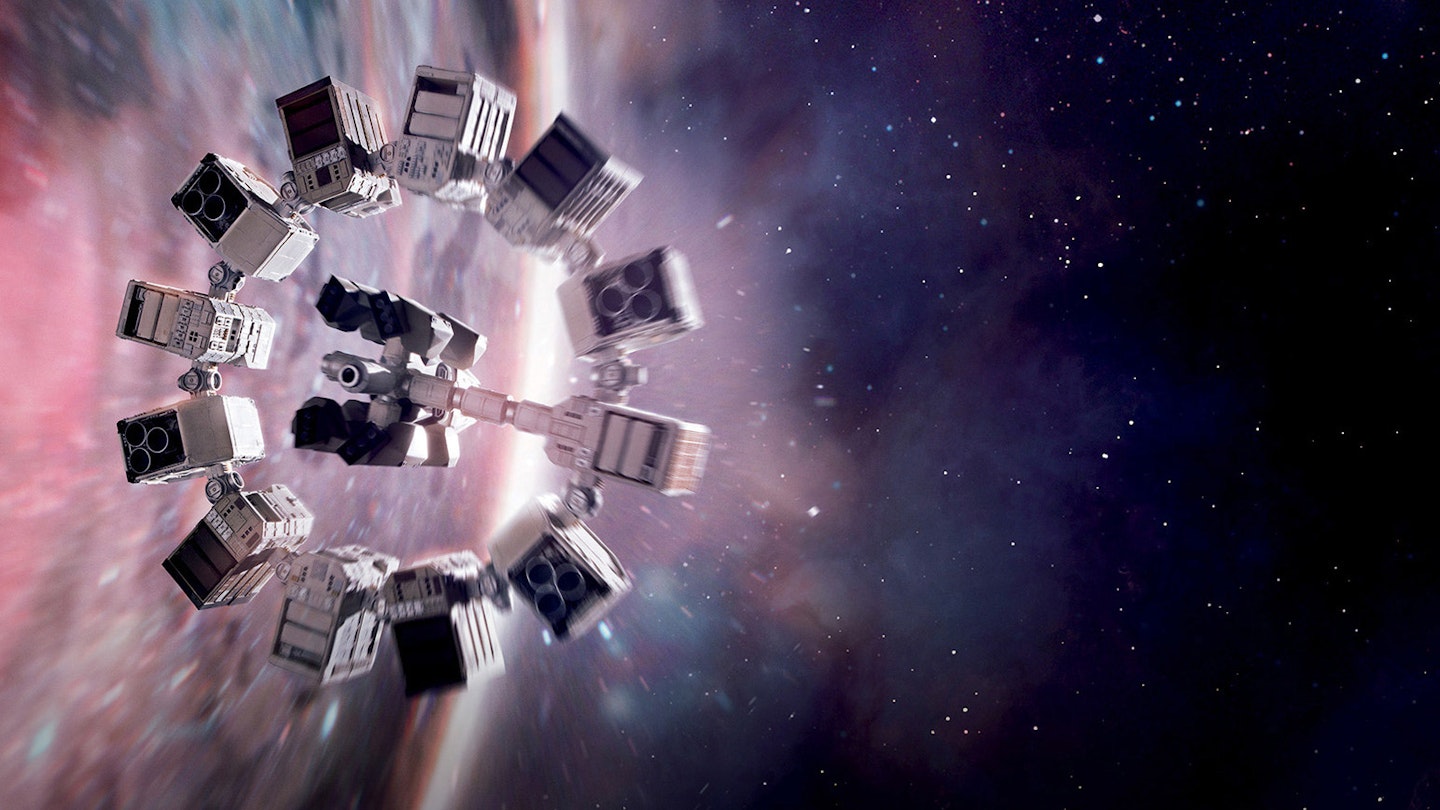Did you watch Interstellar and think: what the hell was that all about? Did the science leave you confused, the varying timelines leave you baffled, and the monologues on the power of love leave you perplexed and a bit tired? You don’t need a degree in astrophysics or the personal telephone number of Christopher Nolan to understand the film – just follow Empire’s trusty guide.
Be warned that we discuss Interstellar’s detailed plot points in forensic and sometimes pointlessly pedantic detail. Consider this your SPOILER WARNING.
What is Interstellar?
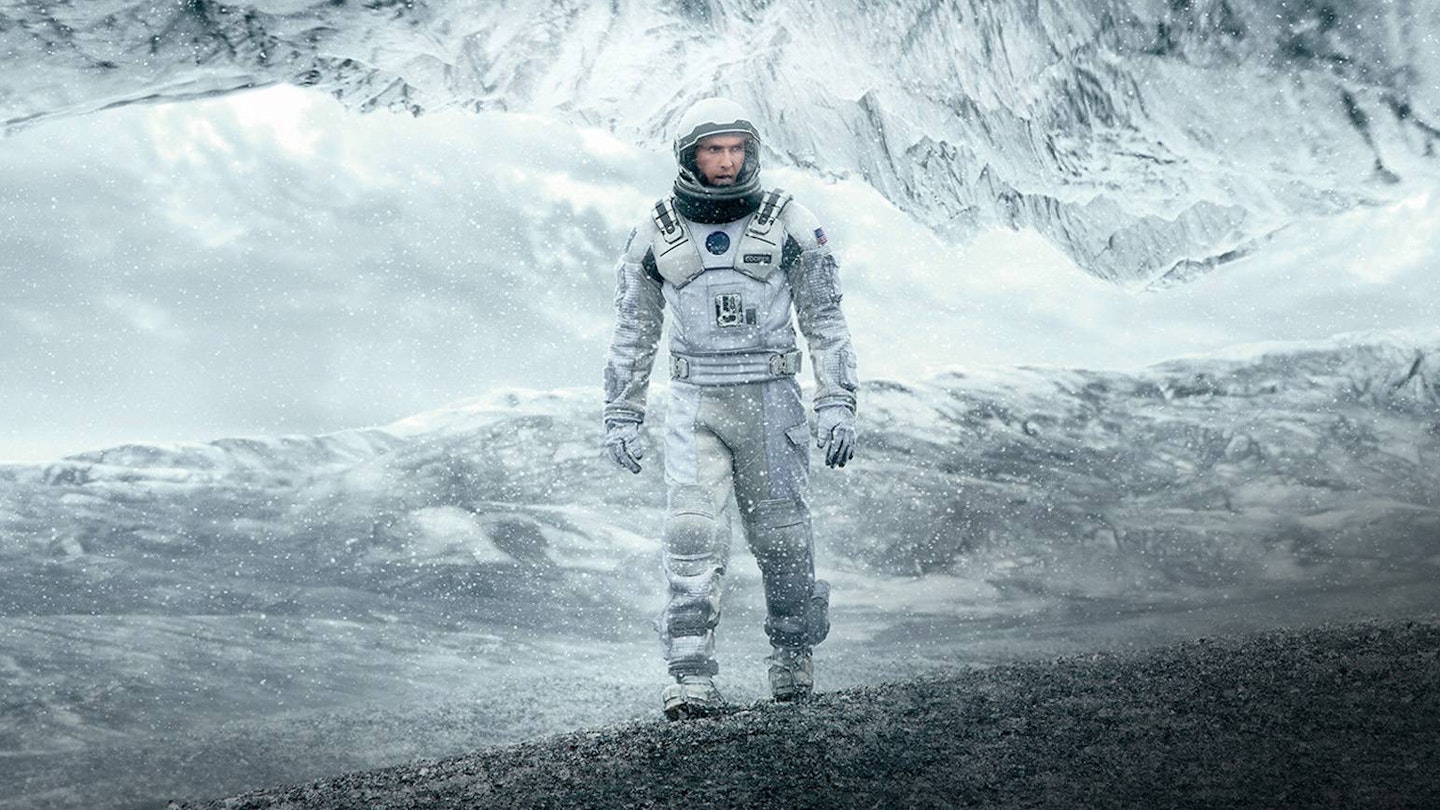
Might as well start with the basics. Interstellar is a film – specifically, a 2014 science-fiction epic, directed by Christopher Nolan and starring Matthew McConaughey, Jessica Chastain, Anne Hathaway, John Lithgow and Michael Caine. Set in a future where a failing Earth puts humanity on the brink of extinction, it sees an intrepid team of NASA scientists, engineers and pilots attempt to find a new habitable planet, via interstellar travel. ReadEmpire’s 5-star review right here.
When does Interstellar take place?
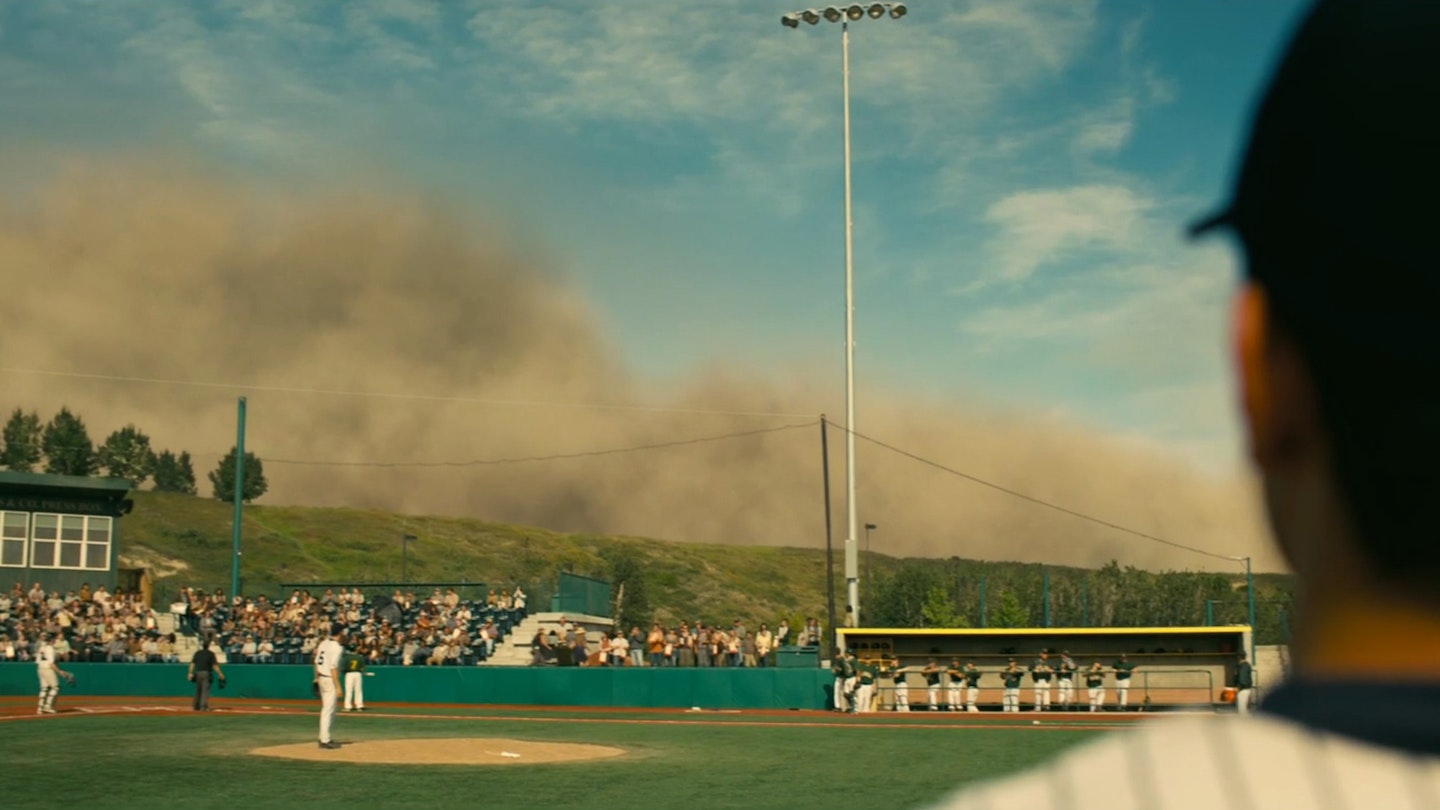
It’s not clear. There’s no title card at any point giving a date, and Nolan has been cagey about specific details. A clue comes from the early dialogue between Coop (McConaughey) and his father-in-law, Donald (John Lithgow), during an amateur-looking baseball game.
Donald: In my day we had real ball players. Who’re these bums?
Coop: Well, in my day, people were too busy fighting over food to even play baseball.
This neat sprinkling of backstory seems to suggest that when Coop was young, the world came near to collapse due to food shortages; it also suggests that when Donald was young, society was yet to collapse (and people still knew how to play baseball to a competent level). You could therefore extrapolate that Interstellar takes place a couple of generations after the present day, i.e. late 21st century. But that’s mere guesswork. The true answer is: we don’t know.
Why do they want to leave Earth, anyway?
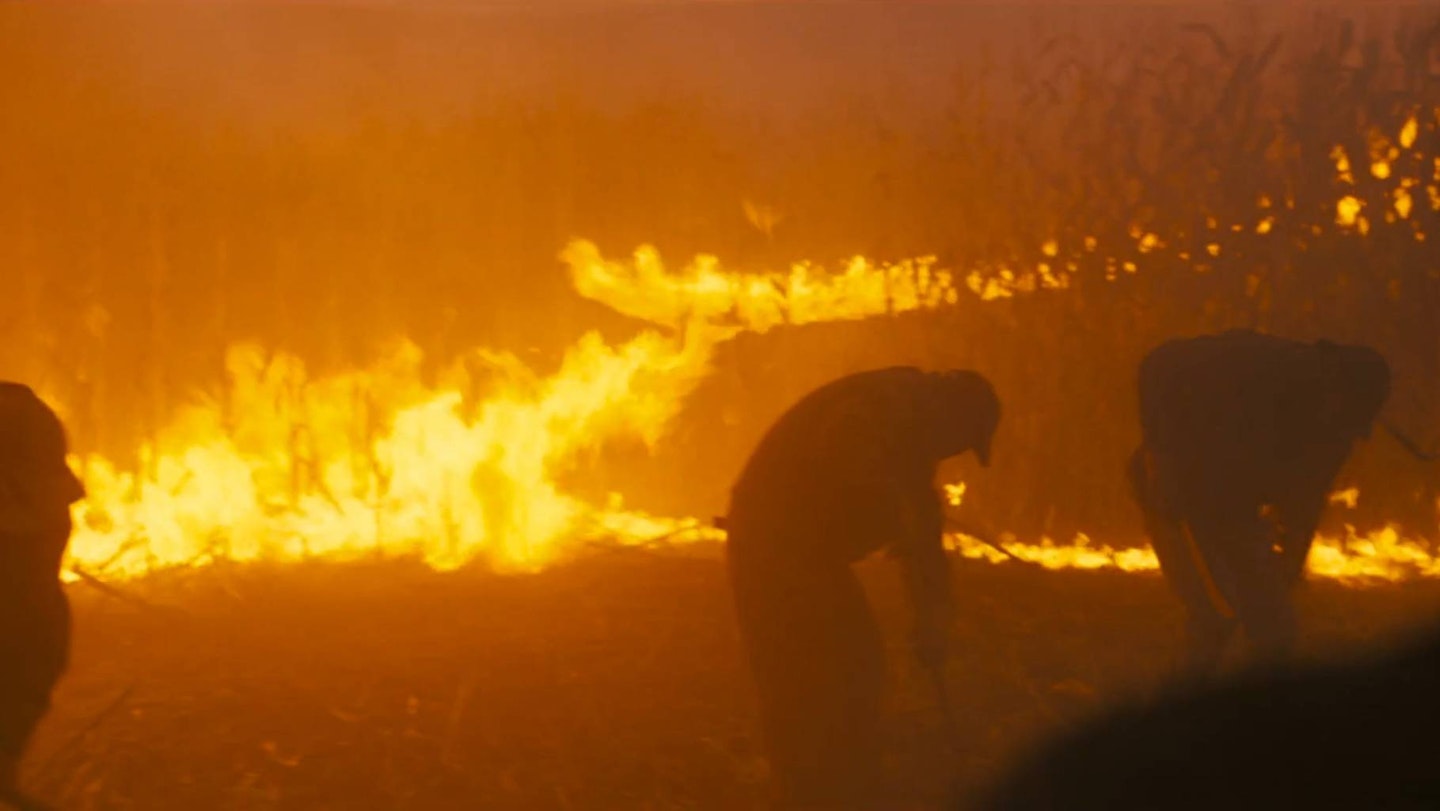
In short: blight, food shortages, and lack of oxygen. According to the book The Science of Interstellar by Kip Thorne, the film imagines a future where a combination of catastrophes reduces the population of North America tenfold or more, with similar consequences for the rest of the world.
In this world, society has moved to an agrarian existence (i.e., everyone’s a farmer), and crops are failing due to blight – a plant disease caused by pathogens. Blight will also reduce oxygen in the Earth’s atmosphere – as Professor Brand (Michael Caine) observes: “the last people to starve will be the first to suffocate”. In other words, Earth is no longer a suitable home, and humanity is facing extinction.
Nolan drew inspiration from the Dust Bowl period that ravaged the American prairies during the 1930s, where a combination of drought and poor farming methods led to dust storms and crop failures. Some of the talking heads seen at the start of the film are real-life accounts from that period, taken from the documentary The Dust Bowl by Ken Burns.
What’s all this ghost stuff about?

Right. We’re getting into the nitty and at least some of the gritty – so just another reminder that there are heavy spoilers for the end of the film from here on in. Coop’s daughter, Murph (Mackenzie Foy), complains to her father of a “ghost” that throws books around her room, poltergeist-style, and appears to leave messages.
Coop later realises that it is not a ghost, but a gravitational anomaly. The anomaly leaves messages in binary code: GPS coordinates that lead Coop and Murph to the NASA base. We also later discover that a message has been left in Murph’s watch by “them” (see below).
As it turns out, gravitational anomalies have been detected by Brand’s team of scientists for almost 50 years – around the same time that a wormhole appeared near Saturn. It’s ultimately revealed that these anomalies have been sent, in part, by Coop himself, via the tesseract. But let’s not get ahead of ourselves.
What is the gravity equation?
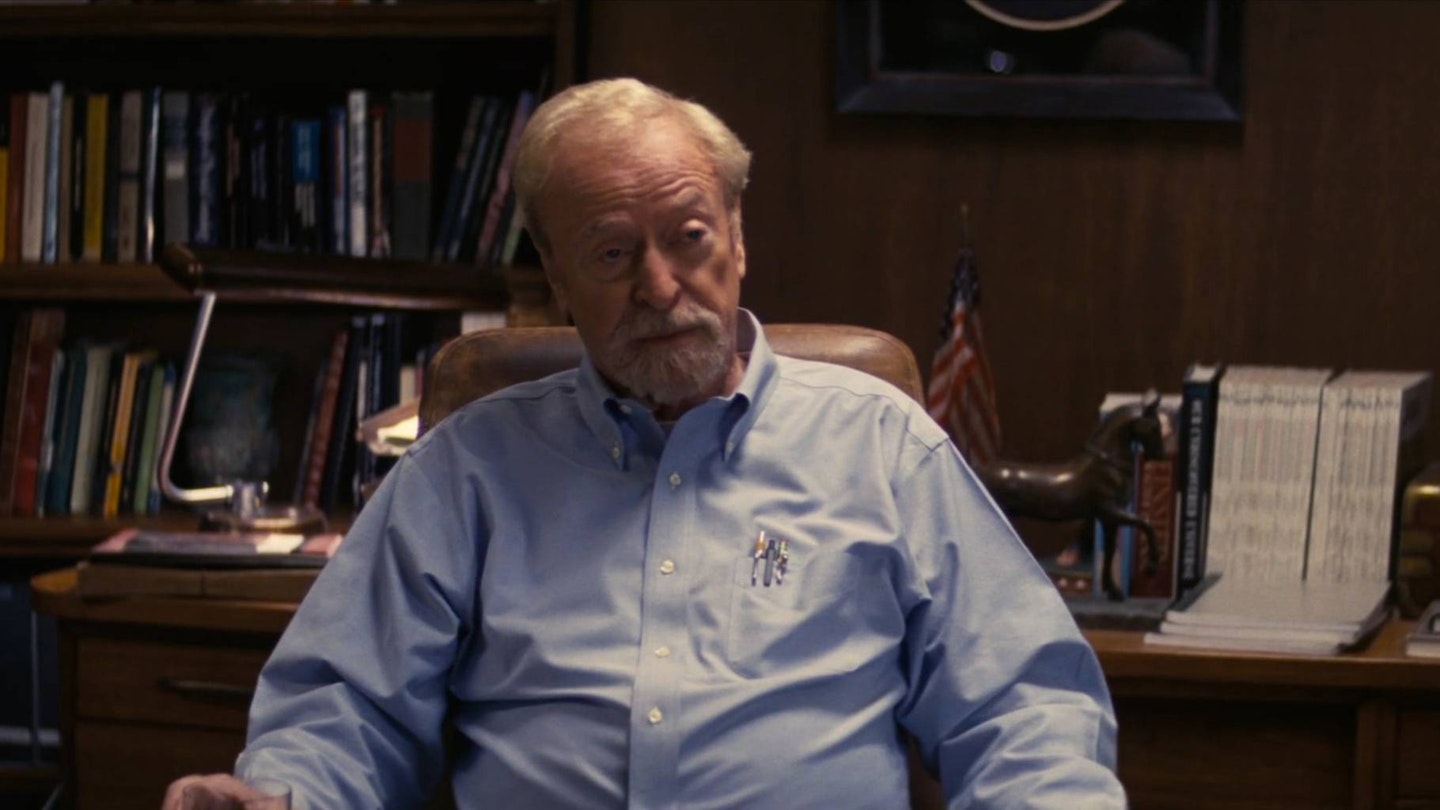
Professor Brand: [The anomalies] changed everything. Suddenly we knew that harnessing gravity was real. So I started working on the theory.
Essentially, the gravity equation is Professor Brand’s attempt to control gravity. The gravitational anomalies observed by Coop, Murph and Professor Brand lead to a complete reevaluation of the scientific understanding of gravity.
If the Earth is dying, a mass evacuation of humanity is nearly impossible with current rocket propulsion technology. Gravity is pulling you down. People and rockets are too heavy. The gravity equation seeks to manipulate gravity, using the anomalies, in order to “get a viable amount of fuel and life off the planet”.
Brand has been attempting to “solve gravity” for 40 years, to no avail; he’s even built his entire facility as a space station in preparation. But as a character later notes, “the equation couldn’t reconcile relativity with quantum mechanics. You need more. More data. You need to see into a black hole...”
The idea that gravity can be harnessed in this way, or can travel across dimensions, is speculative science-fiction, but it’s rooted in theoretical astrophysics.
What is Plan B?

Brand has a back-up plan. If he can’t evacuate the human population on Earth using his gravity equation, he will repopulate humanity on a new planet using fertilised eggs, abandoning those still on Earth. Later in the film, on his deathbed, Brand admits that the whole mission was a lie: he was unable to solve the gravity equation without entering a black hole, so ‘Plan B’ was really ‘Plan A’.
What is that wormhole?
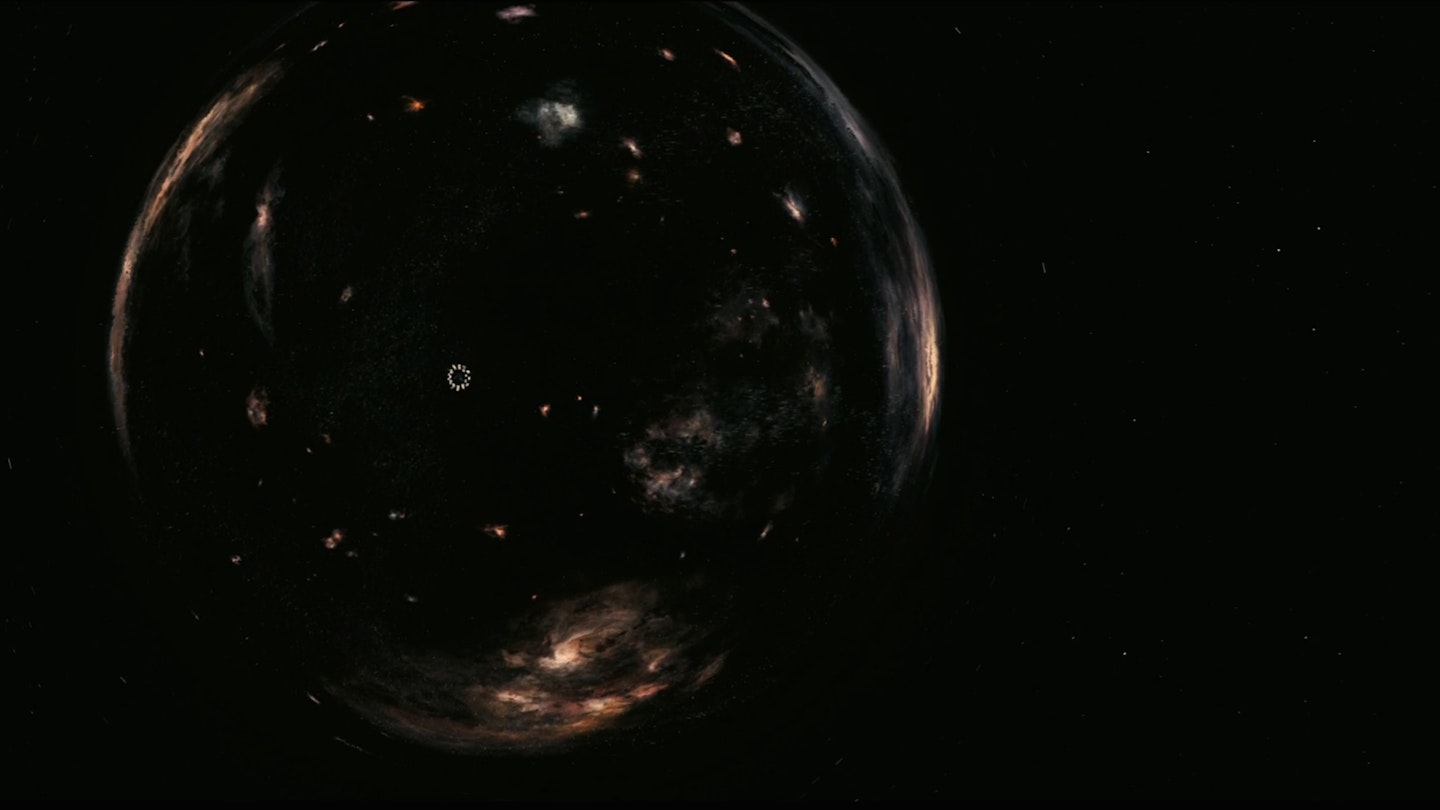
Interstellar travel – moving between stars and solar systems in the universe – is technically impossible. As Coop notes, “there’s not a planet in our solar system that can sustain life, and the nearest star is over a thousand years away”.
In order to find a new home, humanity needs to find a new planet in a distant corner of the universe – and the only way to get to a distant corner of the universe is through a wormhole. Luckily, a wormhole appears near Saturn – the most significant gravitational anomaly of all, a “disturbance of space-time”, leading to a distant galaxy.
The concept of wormholes emerged from Einstein’s general theory of relativity, a hypothetical 'bridge', formed by space-time bending to bring two distant points in the universe closer together. In the film, Dr. Romilly (David Gyasi) explains it to Coop as two points on a piece of paper; a wormhole folds the paper and passes through the end points.
Who put the wormhole there?

“They” did.
Wormholes don’t appear naturally, as Coop notes (and Kip Thorne confirms in his book). So it must have been placed there by someone, or something. Early in the film, we’re led to believe that a benevolent ultra-advanced civilisation has placed it there. Aliens, basically. Extra-terrestrial Samaritans.
Later in the film, Coop interprets “they” as “us”. “They didn’t bring us here at all”, Coop tells the robot, TARS. “We brought ourselves.” It is Coop himself who sent himself the coordinates to NASA and the quantum data from the tesseract (see below). And it’s implied that the ultra-advanced civilisation are in fact humans from the future, who have mastered quantum mechanics to the extent where they exist in five dimensions – that is, they can move forwards and backwards in time and space with ease. We never meet this advanced civilisation; like a lot of Nolan’s work, that element is left carefully ambiguous.
Why does time move faster on Miller’s planet?
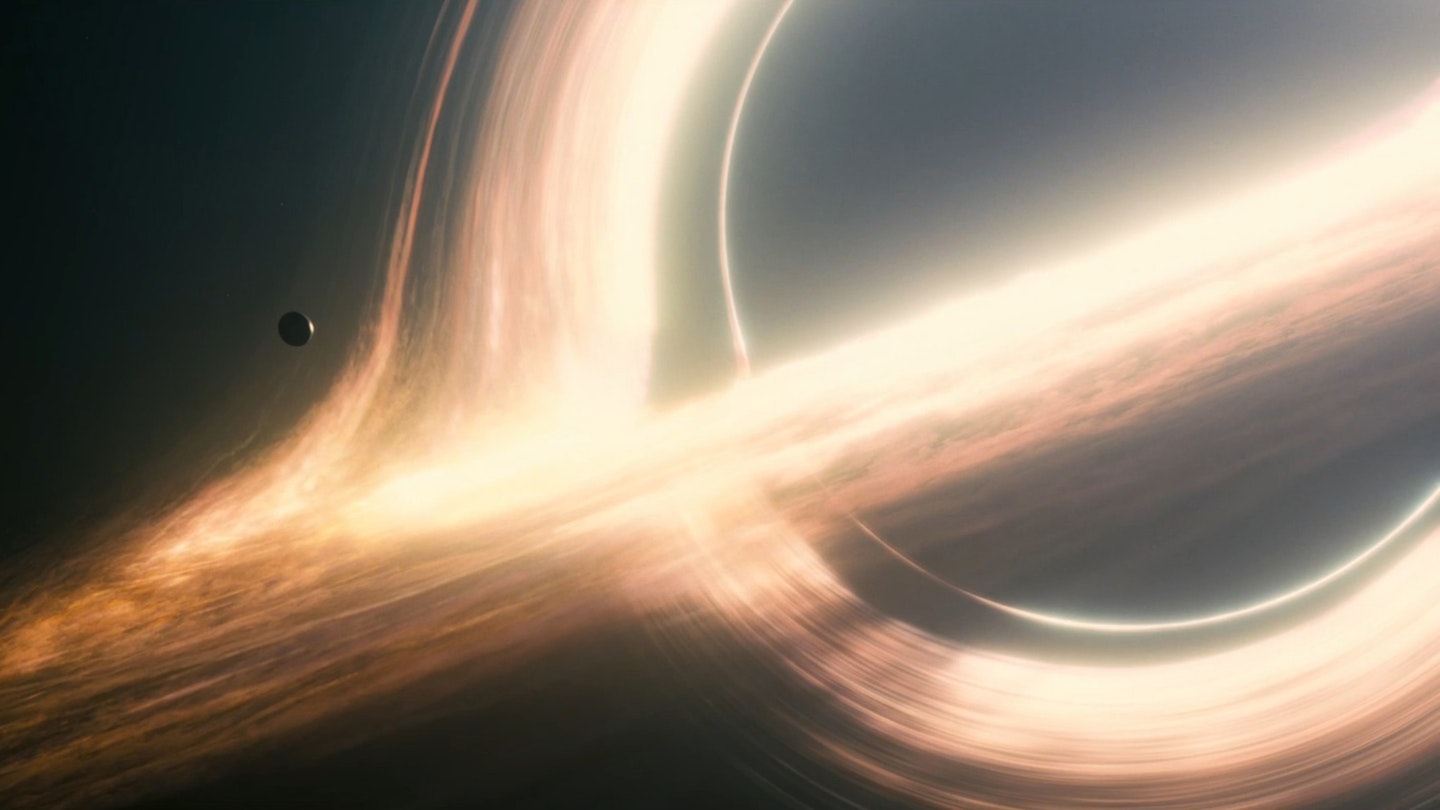
In a word: relativity. After passing through the wormhole, Coop’s team decide to land on Dr. Miller’s ocean planet. It’s orbiting Gargantua, the massive glowing black hole that exists in the foreign galaxy. Due to Gargantua’s massive gravitational pull, “every hour on that planet is seven years on Earth”. After a massive tidal wave hits the spacecraft and delays their exit, they find that 23 years have passed on Earth.
Gargantua warps space-time; its gravitational strength bends Miller’s planet (which, according to Kip Thorne, is as near to Gargantua as it can get without falling in), stretching and squeezing it toward and away from the black hole. Compared to Earth, space-time on Miller’s planet has been warped, hence why the crew say they must “think of time as a resource, just like food or oxygen”.
Einstein’s theory of relativity is key to all this. His revolutionary 1915 theory proposed that the larger the object, the more spacetime is warped and twisted. Spacetime is warped around Earth, for example (as proved by a 2004 satellite); for a black hole with a circumference of a billion kilometres, as Gargantua is, spacetime is warped considerably more.
As Romilly says: ”That’s relativity, folks.”
What’s love got to do with it?
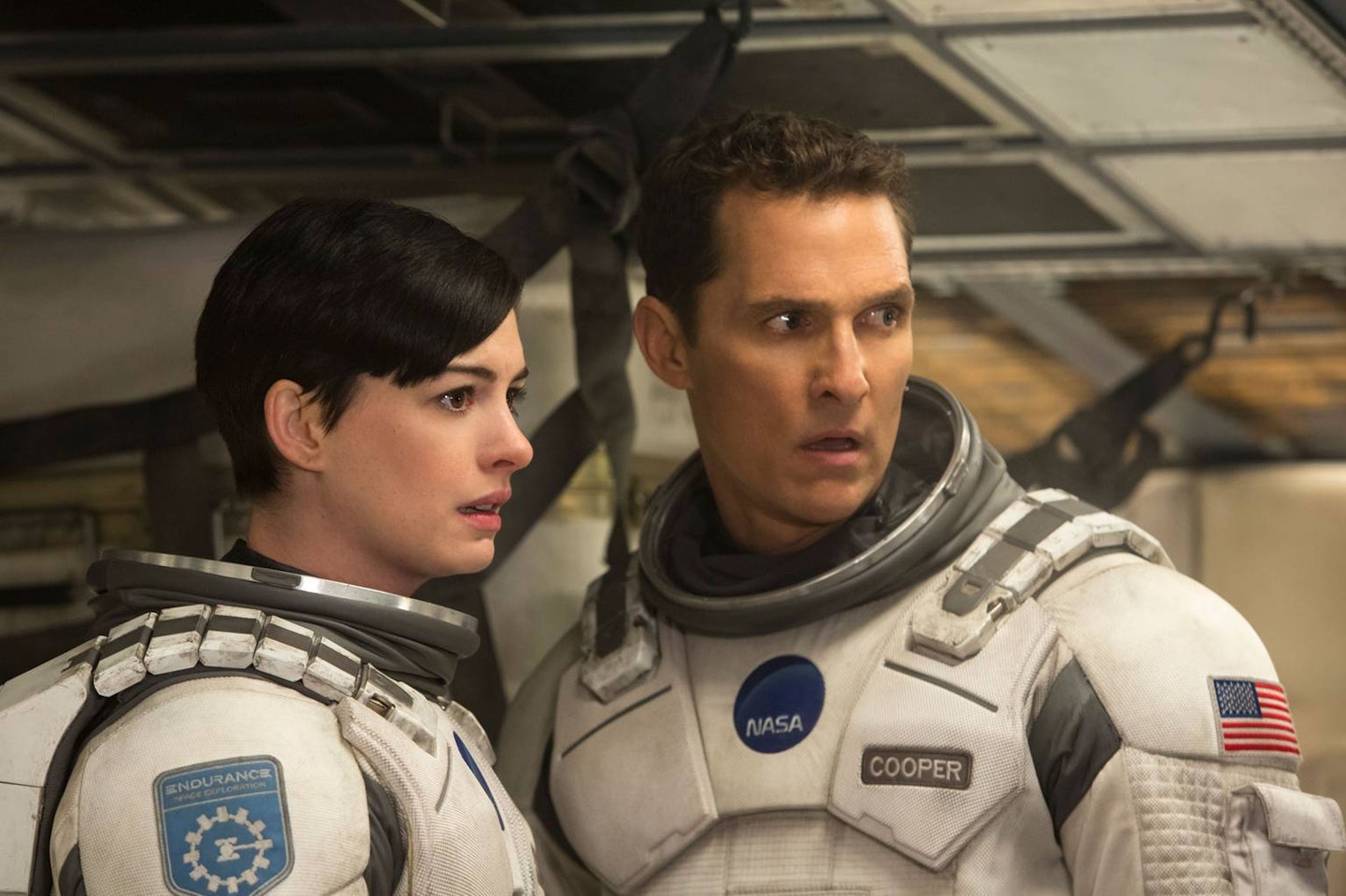
Love is a key theme in the film. It leads to some scenes that tend to divide people into two camps – those who think it is a powerful and emotional antidote to the film’s heavy scientific concepts; and those who think it is cheesy sentimental hogwash.
Love is the one thing that we're capable of perceiving that transcends dimensions of time and space.
Whichever camp you fall in, Christopher Nolan would like you to accept it as an important part of the film’s architecture. It’s discussed in a key scene between Coop and Dr. Brand (Anne Hathaway) when they debate which planet to visit first:
Brand: Maybe [love] means something more - something we can't yet understand. Maybe it's some evidence, some artefact of a higher dimension that we can't consciously perceive. I'm drawn across the universe to someone I haven't seen in a decade who I know is probably dead. Love is the one thing that we're capable of perceiving that transcends dimensions of time and space. Maybe we should trust that, even if we can't understand it.
Coop is skeptical. But later in the film, he changes his mind, telling TARS that “[love] is quantifiable”. It is love which drove him to give Murph a watch as a parting gift, and love that gives him faith she will return to her childhood bedroom to find it. It’s love, Nolan would like us to believe, that saves the universe, and perhaps love that exists as a quantifiable higher dimension, better understood by future civilisations. Or maybe it’s just for selling Valentine’s Day cards.
Wait a minute, Matt Damon is in this film? And he’s evil?
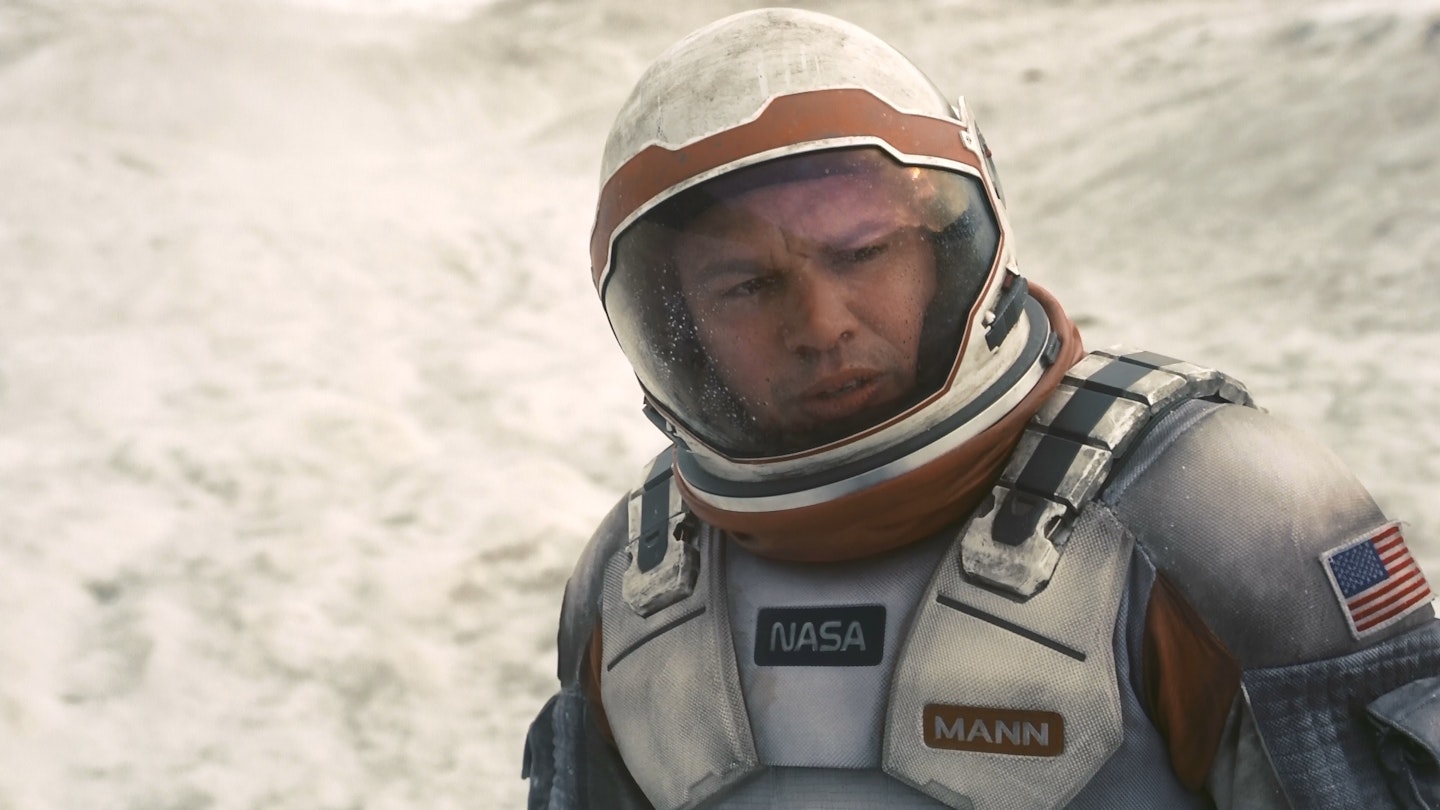
Yep. Matt Damon cameos as Dr. Mann, the leader of the Lazarus mission which first explored the foreign galaxy. Damon’s appearance, emerging from the cryo-sleep, came as a surprise to many audiences first watching; Nolan deliberately kept his involvement in the project under wraps. He was not involved in any of the pre-release publicity.
He’s not evil, per se. But he is a bit of a dick. Mann is an example of humanity’s selfish nature – his surname is a not-particularly-subtle bit of signposting – as he deliberately manipulates his data to pretend that his ammonia-filled planet is habitable. He sabotages Coop’s crew purely to escape from the planet and make it back to Earth.
So, are Interstellar and The Martian connected?
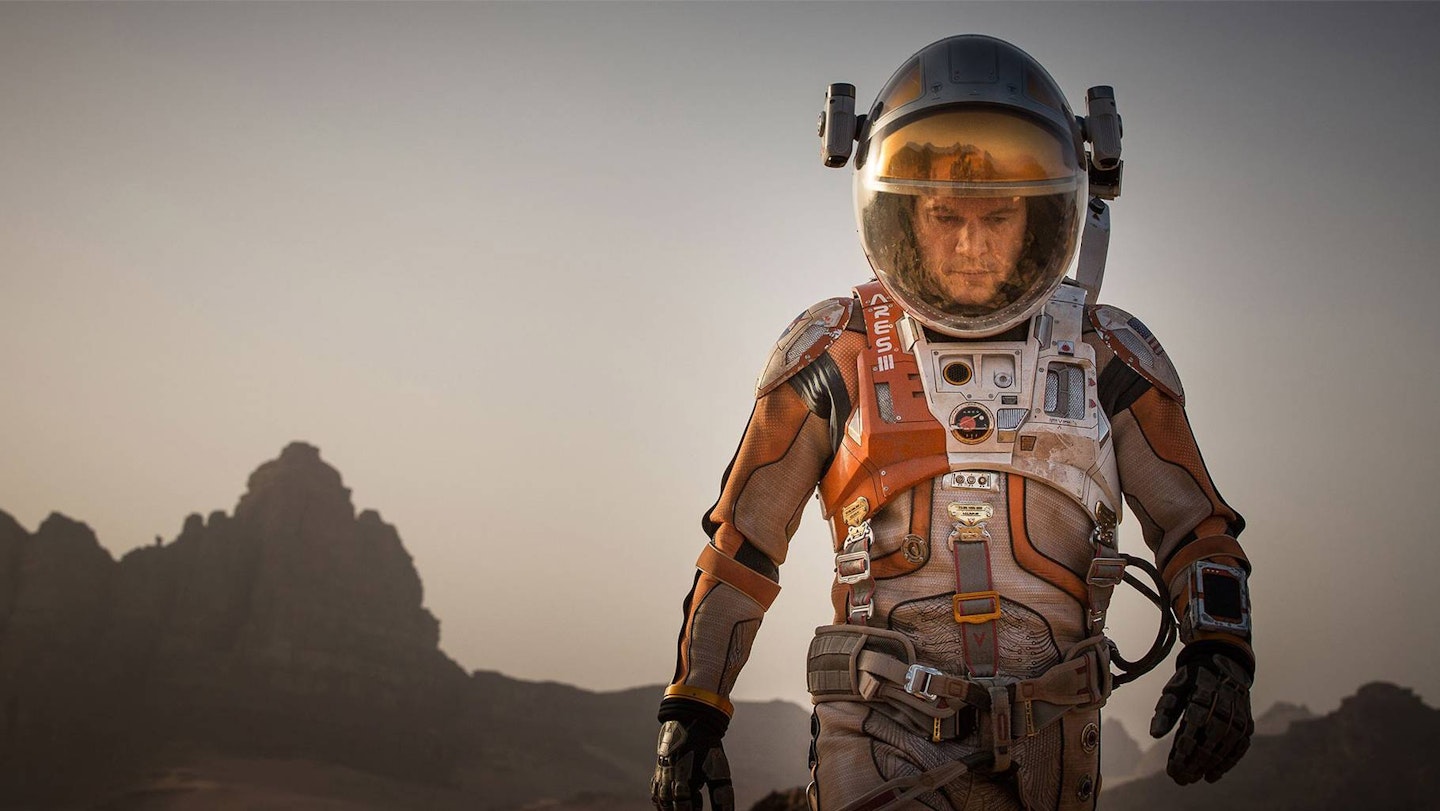
No.
Despite many people on the internet apparently thinking otherwise, it’s entirely a coincidence that Interstellar and The Martian, two movies released less than a year apart, feature Matt Damon as an astronaut stranded on a distant planet.
Damon himself has acknowledged the coincidence, telling one interviewer that he initially hesitated signing on to The Martian, so soon after a similar role. But director Ridley Scott convinced him.”[I thought] it might be weird,” Damon said, “if, after taking a year and a half off, I played another dude stranded on a planet.” To which Scott apparently replied: “The movies are totally fucking different.” Fair enough.
What exactly is that weird bookshelf kaleidoscope acid trip thing?
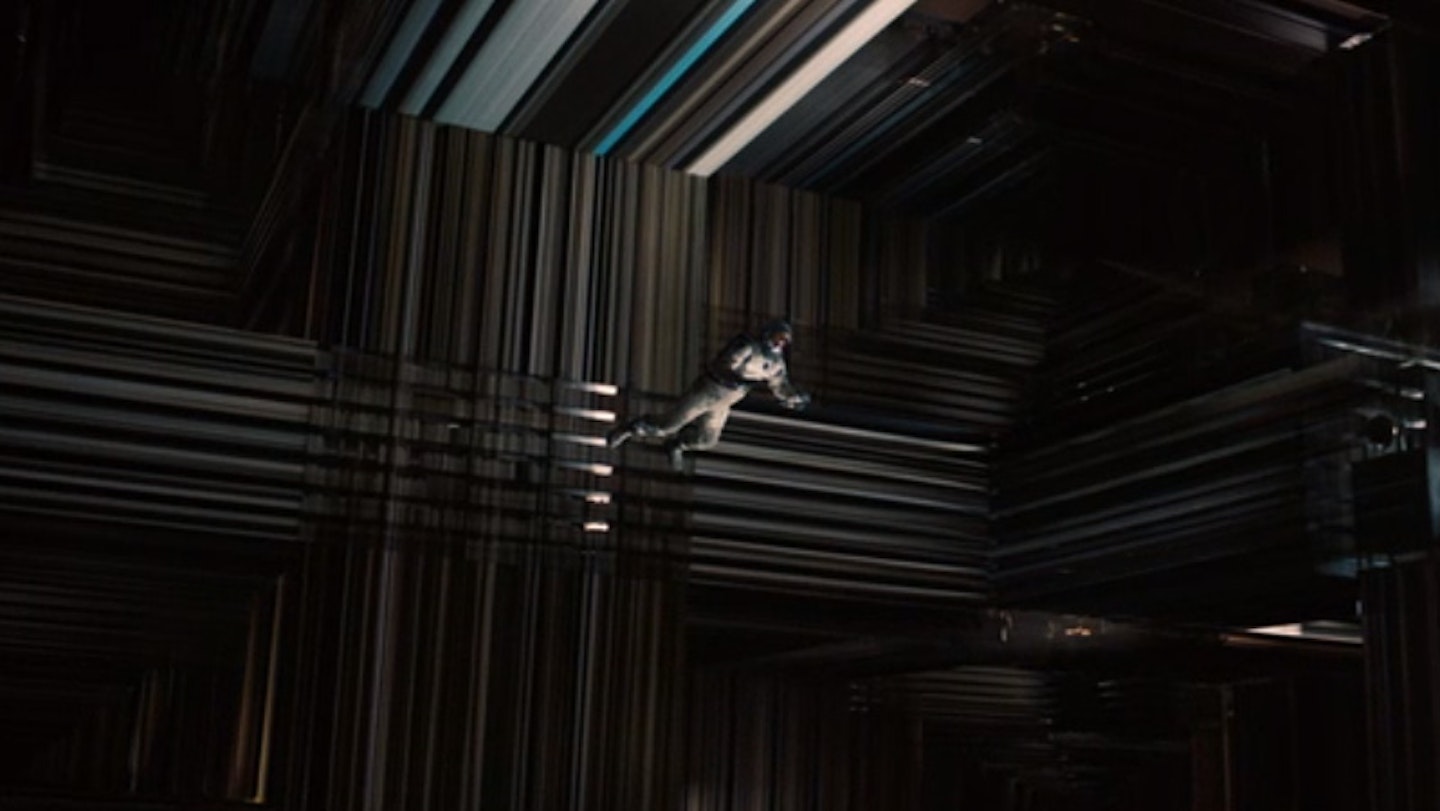
This is referred to in the script as the ‘tesseract’. (No, not the blue cosmic cube thing floating around the Marvel Cinematic Universe.) In geometry, a tesseract is a ‘hypercube’, a four-dimensional version of a cube: a tesseract is to a cube as a cube is to a square. In Interstellar, it is where Coop and TARS enter after passing through the event horizon (the boundary at which not even light can escape) of the Gargantua black hole.
TARS explains to Coop that the ultra-advanced beings “constructed this three-dimensional space inside of their five-dimensional reality to allow you to understand it”. Time is represented as “physical dimension”. Coop sees Murph’s bedroom, from when she is 10 years old, and every moment in that time is presented through infinite physical lines which Coop is able to travel through and experience.
He is moving around time physically, just as Dr. Brand had earlier speculated, when she says: “to Them, time may be just another physical dimension. To Them, the past might be a canyon they can climb into, and the future a mountain they can climb up.”

Coop himself can’t travel back in time physically. But in Interstellar’s science-fiction, gravity can cross dimensions, including time. So Coop is able to send a message to his young daughter. Initially, out of sadness, he writes “STAY”, by throwing books off the bookshelf. Then he gives her the coordinates to NASA in binary.
Finally, he takes the quantum data that TARS has collected from the black hole’s singularity – data which could only be observed from within the black hole – and sends it, via morse code, to the second hand of Murph’s watch. It’s this quantum data which solves Brand’s gravity equation.
The tesseract has proved contentious among some viewers. But it’s not quite the insane far-fetched fantasy that some have made it out to be. Like everything in this film, it takes existing scientific theories and extrapolates them for dramatic effect. Nobody has ever entered a black hole, so nobody can definitively say that it doesn’t contain a weird bookshelf kaleidoscope acid trip tesseract thing.
What the hell is that strange tube-like Earth at the end?

That’s ‘Cooper Station’. As an adult, Murph uses the quantum data from the watch to solve the gravity equation. She is able to understand how to harness gravity, and how to control it. As a result, humanity is able to leave Earth in vast numbers. Numerous tube-like colonies now apparently exist in the solar system.
It’s never fully explained how Cooper Station was constructed. But in The Science Of Interstellar, Kip Thorne interprets that Murph has figured out how to reduce Earth’s natural gravitational pull. If you can reduce Earth’s gravity, it makes it a lot easier for rocket propulsion to lift a colony big enough to support life into space. Thorne does suggest that reducing the Earth’s gravity would wreak havoc on Earth, with earthquakes and tsunamis galore. But it’s a small price to pay for humanity’s safety.
Coop doesn’t hang around very long with Murph at the end, does he? You’d think after travelling through a black hole and being separated for decades, he’d want a bit of a catch-up with his daughter?
Well, quite.

Can you explain Interstellar in 50 words or less? I can’t be bothered to read all of this.
Humanity is on the brink of extinction when the Earth fails. A futuristic fifth-dimensional civilisation guide a team of astronauts into harnessing gravity so humanity can evacuate. Also, it’s kind of about love. And astrophysics.
Empire's review answers all the remaining questions.
